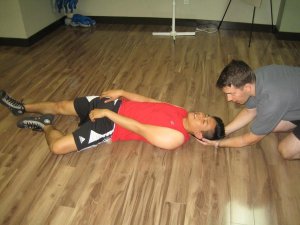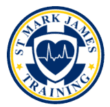
Head injuries are a broad classification of injuries that pertains primarily within close proximity to the scalp, skull or brain. It is the most common cause of death from trauma based on worldwide statistics.
Traumatic brain injuries are the most serious form of head injury. The most common causes of a traumatic brain injury are motor vehicle crashes, violence and falls. Groups that are prone of experiencing traumatic brain injuries are males ageing 15 to 24 years because of their psychosocial predisposition. Furthermore, the very young (younger than 5 years old) and the very old (older than 75) are also at increased risk of acquiring injuries to the head because of their frail physical structure.
Preventing head injuries and spinal cord injuries
Most if not all head injuries can actually be prevented. It takes proper precautionary measures and strict observance of the basic principles and guidelines of safety wherever and whatever situation the case may be; in the home, at work, in the streets or inside any motorized vehicle. Proper observance of safety is the best protection against head injuries. Below are some general guidelines that health professionals can impart to their patients in preventing head injuries:
- Advise motorists to strictly obey traffic laws and to avoid speeding or driving under the influence of drugs and alcohol.
- Advise all drivers and passengers to wear seatbelts and shoulder harnesses. Children younger than 12 years old should be restrained in an age/sized-appropriate system in the back seat.
- Caution passengers against riding in the back of pick-up trucks.
- Advised motorcyclists, scooter riders, bicyclist, skateboarders and roller skaters to wear helmets and appropriate protective devices.
- Promote educational programs that are directed toward violence and suicide prevention in the community.
- Provide water safety instruction especially in outdoor swimming places.
- Advise elderly patients in instituting safety standards in the home to prevent falls and similar accidents.
- Advise athletes and their coaches to use protective and proper gear when playing their sport.
Pathophysiology of brain injuries
Research suggests that not all brain damage occurs at the precise moment of impact. Damage to the underlying structures of the brain from a traumatic brain injury takes two forms namely; primary injury and secondary injury. Primary injury to the brain may include contusions, lacerations and torn blood vessels due to impact, acceleration/deceleration or foreign object penetration. Secondary injury evolves over ensuing hours and days after the initial injury and is due primarily unchecked cerebral edema, ischemia and chemical changes associated with direct trauma to the brain.
The difference between sustained body injuries from head injuries in general
An injured brain is predominantly very different from an injury of
other parts of the body primarily because of its unique and intricate characteristics. The brain resides within the skull which is comprised of infused bones that forms a solid compartment which unlike other structures such as the ankle which upon injury expands as a result of the normal inflammatory response, the skull on the other hand is not expandable which upon the onset of an inflammation response has the potential to aggravate the damage already inflicted upon the prior injury. Any bleeding and or swelling of the brain and underlying tissues increases volume of contents within the fixed size of the skull. The resulting restriction of expansion can result in restricted blood flow to the brain tissue which after the instance of a traumatic brain injury can result in ischemia, infarction, irreversible brain damage and death.
